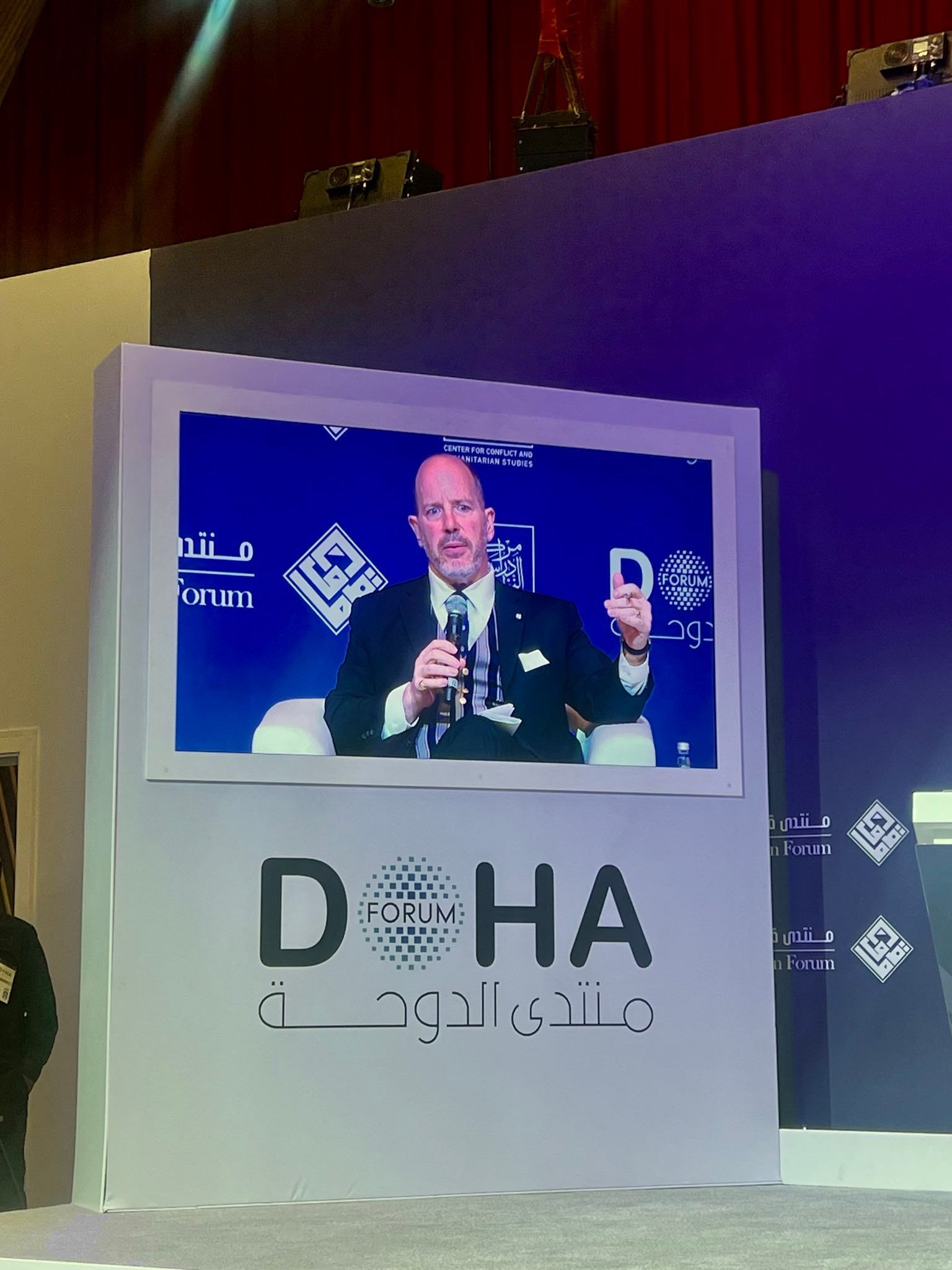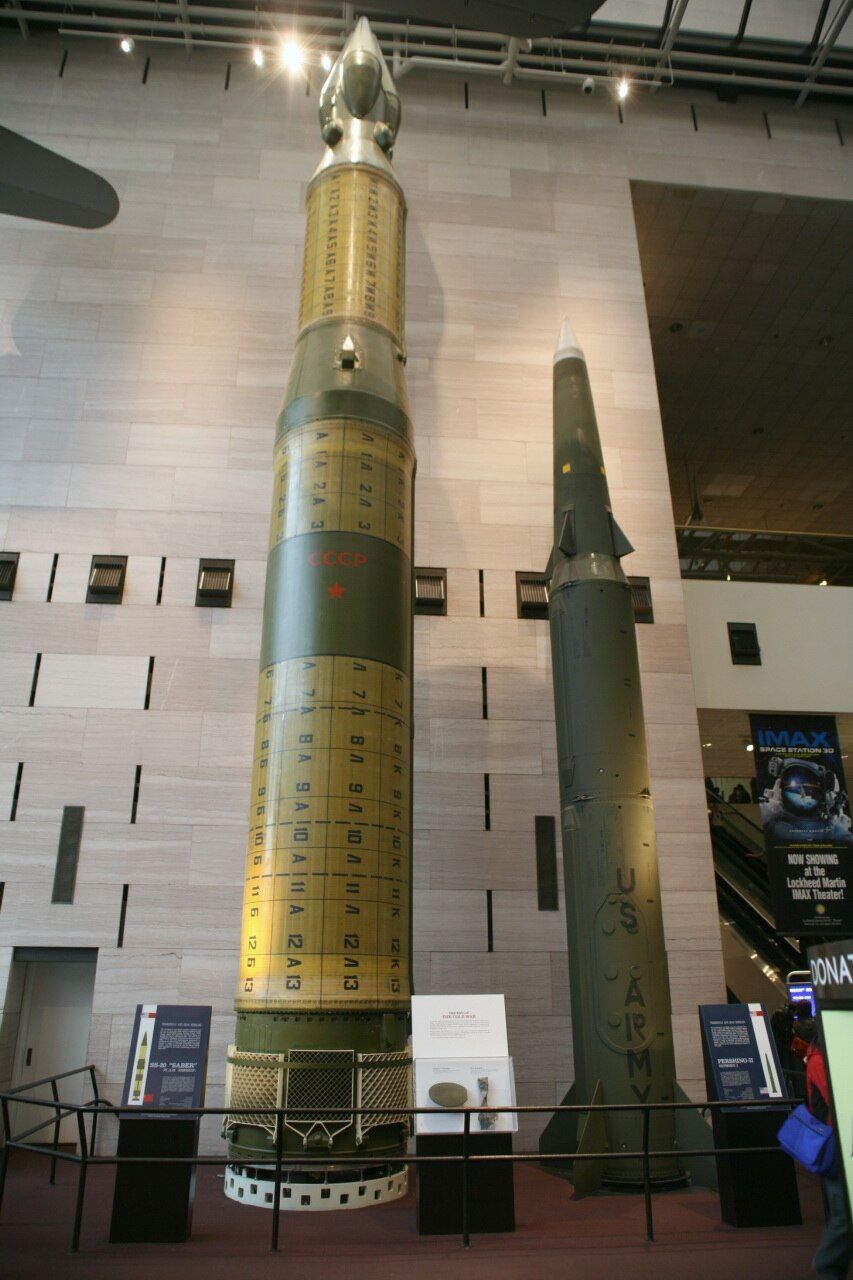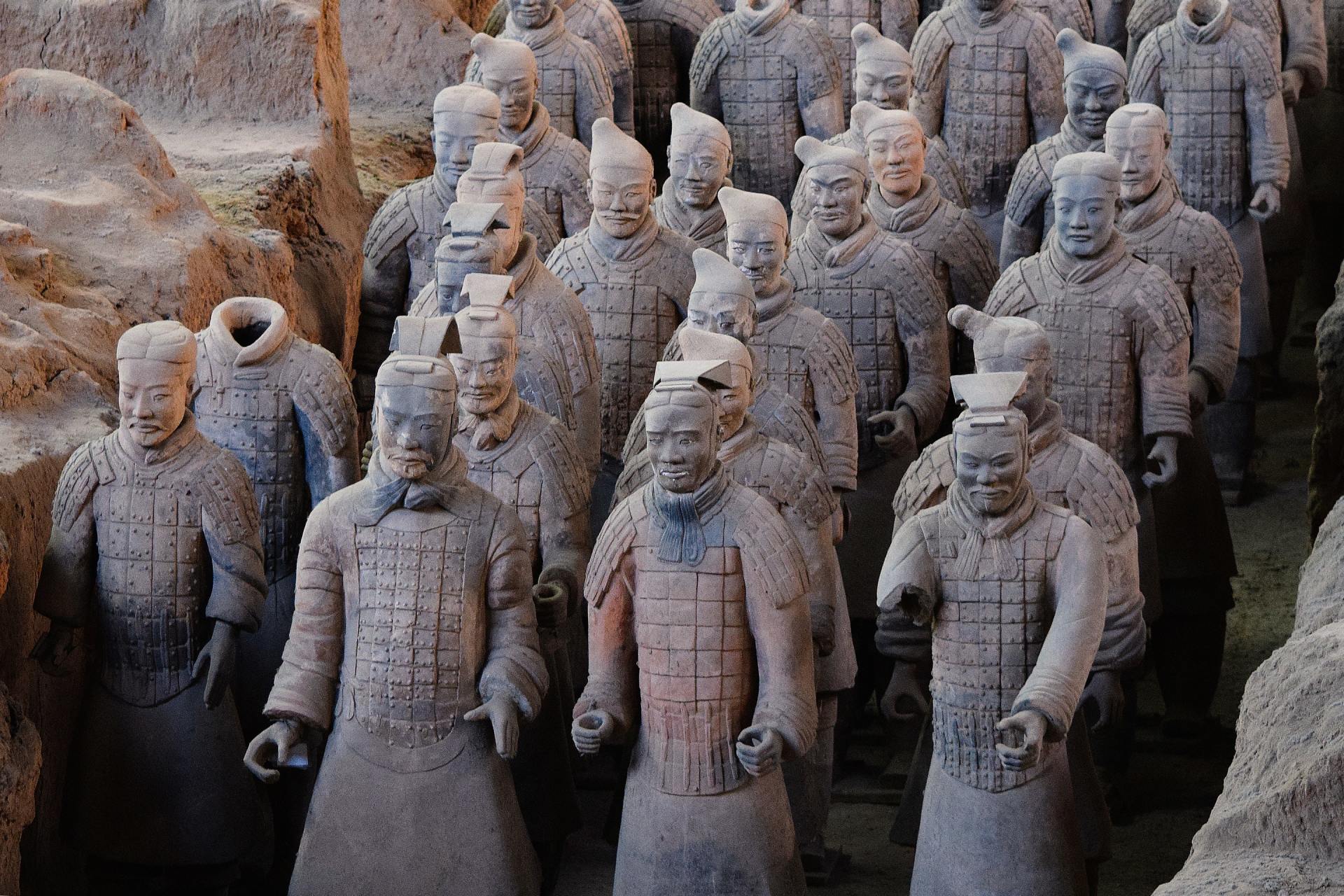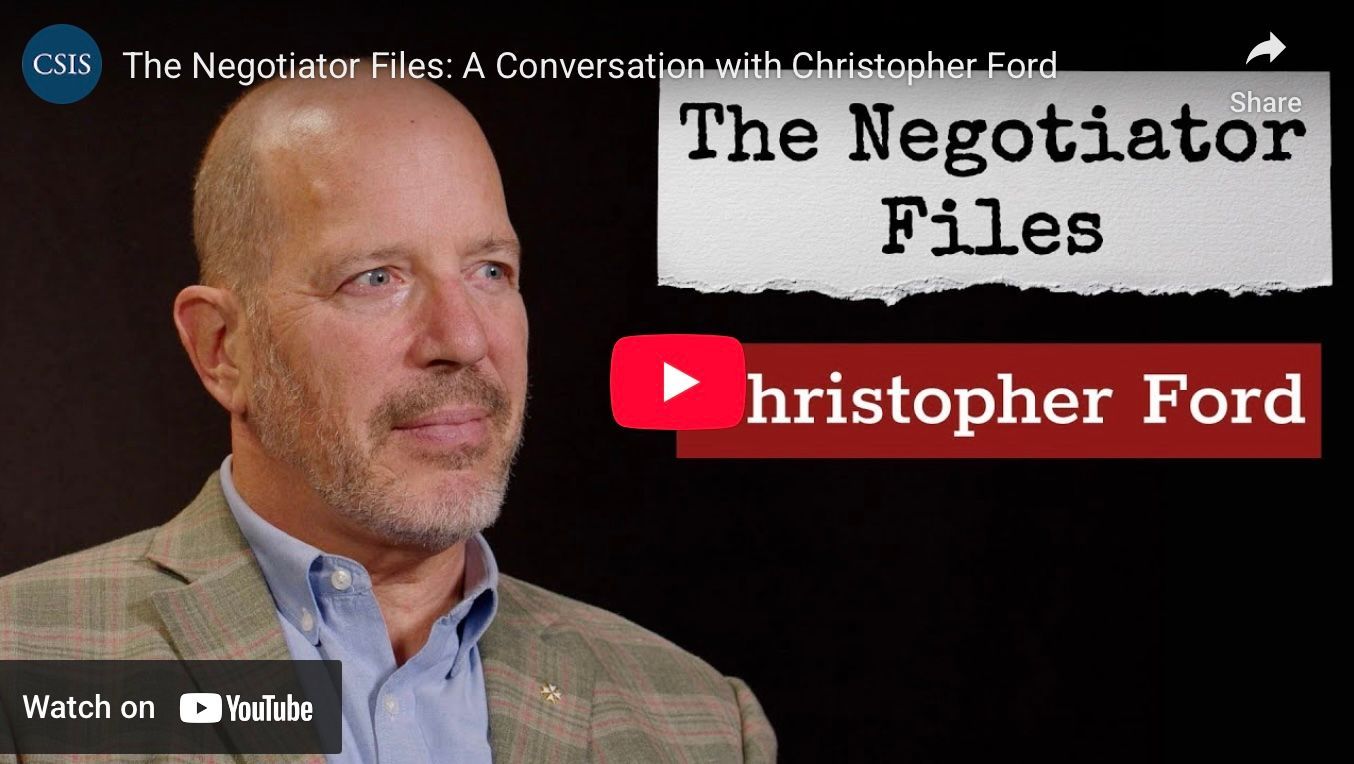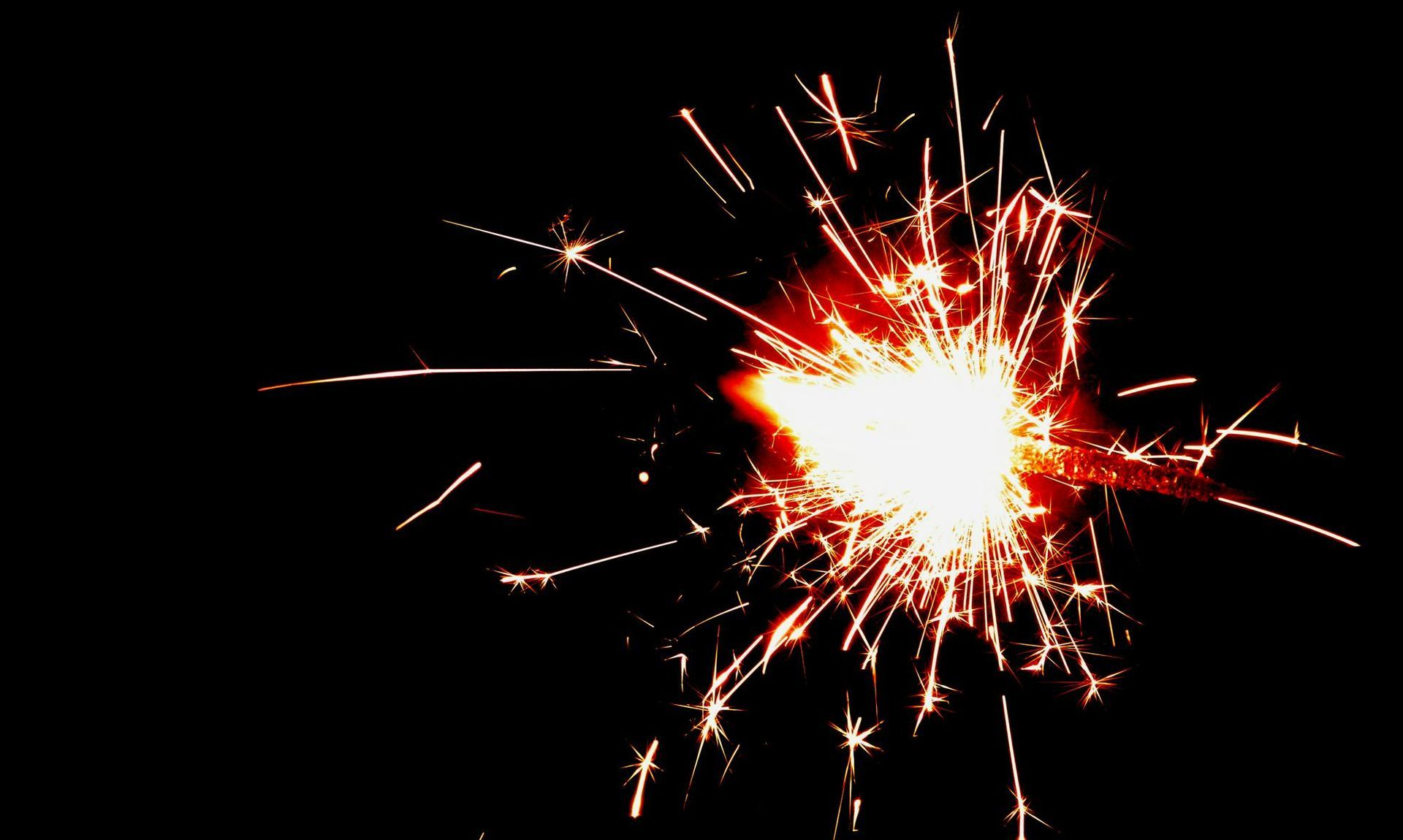Looking Ahead in Nuclear Weapons Policy, Arms Control, and Nonproliferation
Below is the text on which Dr. Ford based his briefing to the European Leadership Network on December 10, 2024.
The Good day, everyone. It’s a pleasure to speak to you at the European Leadership Network (ELN), and to offer my thoughts on what we might perhaps see in the years ahead on issues of nuclear weapons policy, nonproliferation, and arms control.
Please remember, of course, that I have no crystal ball, nor any privileged insight into what is coming from the next U.S. administration now that Donald Trump has so impressively regained the presidency. As usual, my thoughts here represent only my personal views, and I speak for no one but myself.
That said – for whatever they may or may not be worth – I’m happy to offer some speculations about what future there might be for arms control and nonproliferation diplomacy in the years ahead.
Looking Ahead to the 2025 Nuclear Posture Review
So what might we perhaps expect to see in the next Nuclear Posture Review (NPR)? If you want a more detailed, wonky discussion of NPR issue-spotting, I’d refer to you what I offered to a workshop at the U.S. National Defense University earlier this week. For present purposes, let me just hit a couple points that might be of particularly interest to you.
One thing to remember here is that there is – at least traditionally – much more continuity across NPRs than difference, even where U.S. presidential administrations are otherwise hugely divergent in other aspects of foreign and domestic policy. That could conceivably be true again.
That said, how might the next four years under Donald J. Trump differ from the Biden-Harris period?
For one thing, I would expect the next NPR to be notably more bullish about expanding the U.S. nuclear force posture than was that of the Biden Administration’s October 2022 NPR. As you might recall, despite its strong warnings about accelerating nuclear threats, Biden’s 2022 NPR tried hard to demonstrate its Obama-era anti-nuclear bona fides, both by abandoning the B83-1 gravity bomb without any replacement capability in hand, and by trying to scrap the Submarine-Launched Cruise Missile-Nuclear (SLCM-N).
The Biden Administration also made quite the show of pretending – in ways that were simultaneously unconvincing and, frankly, incoherent – to “[e]liminate ‘hedge against an uncertain future’ as a formal role for nuclear weapons.” Such of performative anti-nuclear virtue-signaling, however, is likely to play no part in the drafting of the 2025 NPR, especially because it is quite obvious that just such an “uncertain future” has actually arrived.
Indeed, the current emerging consensus in the Washington, D.C., nuclear weapons policy community points in quite the opposite direction. Already, for instance, we have seen the October 2023 report of the most recent Strategic Posture Review Commission (SPRC) adopt – on a remarkably bipartisan and indeed unanimous basis – a strong conclusion that the current U.S. nuclear force posture modernization plan is both “absolutely essential” and nonetheless also “not sufficient to meet the new threats posed by Russia and China.” Even Biden Administration officials, in fact, have grudgingly admitted that “we may reach a point in the coming years where an increase from current deployed numbers is required,” and that we need to be prepared to expand our arsenal.
The Biden Administration clearly sees the need to do more, but it could never quite muster the moral courage to say so. But it doesn’t take a lot of foresight to predict that the 2025 NPR will be quite open to increasing America’s nuclear force posture, and might well specifically recommend this.
I haven’t heard much argument for trying to match the Russian and Chinese nuclear build-ups on a one-for-one basis, of course, but there does seem to be bipartisan agreement in Washington that something more is needed on top of the existing modernization program that has been in place since 2010 when nuclear threats were far less acute.
Such additional capability might be articulated in terms of numbers (e.g., uploading warheads back into Minuteman III missiles, and placing multiple warheads on the new Sentinel system), or in terms of new delivery systems (e.g., theater-range weaponry, or dual-capable warhead capabilities for existing conventional strike systems, including hypersonic ones). And such details will surely be much debated. Nevertheless, it is hard to see how American nuclear planners facing the current range of strategic threats could not now recommend some kind of augmentation.
In this context, therefore, the most important NPR-related debates may come to revolve around questions of how to manage – and how to pay for – all of what we unfortunately now need. How, for instance, should we handle the challenges of simultaneously accelerating SLCM-N development, developing new capabilities, andshepherding troubled programs such as Sentinel to completion without further delays and cost overruns? These will be programmatic debates over what we can do, in other words, rather than questions of what we should do.
On the issue of what our nuclear posture should be, however, I suspect there is a growing consensus that the era of post-Cold War nuclear arms reductions is emphatically over, and that it is time, in some form or another and at some rate or another, to begin building again.
Nuclear Testing?
I am also frequently asked about Republican attitudes toward nuclear weapons testing, so I should touch upon that here. This question, of course, been a fraught question ever since the U.S. Senate decisively voted down the resolution of ratification for the Comprehensive Test Ban Treaty (CTBT) in 1999. Indeed, Donald Trump’s former national security advisor Robert O’Brien wrote an opinion piece earlier this year in which he urged a return to full-scale nuclear weapons testing. So what might the next four years bring?
I suspect the incoming Republican administration will indeed be at least open to the idea of some kind of renewed testing. Especially after President Trump presumably inevitably re-declares the United States’ intent not to be bound by the CTBT, Republicans certainly won’t credit the idea promoted for a time by the Obama Administration that Article 18 of the Vienna Convention on the Law of Treaties requires us to refrain from testing because “a nuclear-weapon test explosion or any other nuclear explosion would defeat the object and purpose of the CTBT.” (After all, that Treaty is not in force and seems unlikely ever to be, the Senate expressly rejected it in 1999, and multiple U.S. presidents have declared our intention not to be bound. If there ever was a time when we had any international legal obligation under Vienna’s Article 18 not to test, that time is long past and no legally-meaningful intent to be bound can surely be conjured-up now.) So legally, we would feel perfectly free to resume testing if we felt it necessary.
But would we think it necessary? I suppose that would depend upon the circumstances. It’s long been U.S. policy that if some kind of technical issue arose that would create a need to test one of our nuclear weapons to ensure it works as intended, of course, so that’s basically always been on the table.
I’m not aware of any such issues so far, and I believe our national laboratory directors continue to certify that our arsenal is in good shape. We seem to have done a good job so far with the “heroic science” of keeping our Cold War-era weapons operable without testing, and we can presumably continue doing so, at least for a while. I don’t know anybody who would bet on us making those old designs immortal, of course, so perhaps there will indeed come a day when ensuring reliability for our current arsenal would require more testing. But hopefully that day is far off.
A more interesting question would be whether the United States might feel the need to resume nuclear testing if we began developing an entirely new warhead or bomb design in response to the growing nuclear threats presented by Russia and China, and/or the challenges of holding at risk the most formidably deeply-buried targets even in places such as North Korea and Iran. I don’t believe we’ve ever before put a new weapon into service without any testing, and even though our modeling and simulation capabilities are vastly better than in the old days, the need to field an entirely new device could provide the rationale for at least a short testing campaign.
Another possibility might be if it were necessary to test the survivability of our existing designs – or perhaps a new one – against a full-spectrum threat environment of the sort that descending U.S. warheads might encounter under attack from Russian nuclear-tipped anti-ballistic missiles or space-based nuclear devices. It stands to reason that if you want to test a fully-assembled warhead or major sub-systems against realistic shock and radiation effects, you have to create those effects at a scale large enough to affect the equipment whose survivability you want to evaluate. So this, too, could conceivably provide a reason to resume some kind of nuclear explosive testing.
But there are some wrinkles to be aware of here. Resuming full-scale testing would be technically challenging if you wanted to learn much from such tests, because successive Democrat and Republican administrations have let our capabilities atrophy to the point that I doubt we still have much serviceable test instrumentation equipment around anymore.
It was estimated in 2020 that a U.S. nuclear test “with limited diagnostics” – which some have speculated might be “a very simple test for political purposes” – could be conducted “within months, probably not years.” To do a properly instrumented test at full-weapon scale, however, might require the re-manufacture or re-invention of some equipment that does not presently exist, and would require more time to prepare. The time to ready “‘a fully diagnostic’ test that generates ‘lots of data, all the bells and whistles, so to speak, might [thus] be measured in years.’”
Don’t forget, however. If the purpose of a test were simply to make the point that we were willing to defy diplomatic norms and the policy community’s received wisdom by taking such a step – perhaps trying thereby to strengthen deterrence by signaling our resolve or anger in the face of adversary threats – you could certainly do a test without much instrumentation. That’s a possibility to consider as well, particularly should Russia, for instance, carry out a test as part of its ongoing campaign of nuclear saber-rattling against the West.
In another complication, it’s also worth remembering that the population of Las Vegas metropolitan area has grown more than threefold since we stopped underground nuclear explosions at the Nevada test site in 1992, and has also expanded geographically. If we wanted to resume testing we might therefore have to do some diplomacy with the locals, since past underground nuclear tests did sometimes cause mild tremors to be felt in Las Vegas.
I have no particular insight into what the thinking is on these topics within the incoming Second Trump Administration, but these are the kinds of things you’d expect experts to be considering if the question of testing arose again.
But there’s also another factor in play here, too. The United States has publicly assessed since 2019 that our nuclear adversaries may themselves have been conducting at least small yield-producing nuclear tests. Russia, for instance, “has conducted nuclear weapons tests that have produced nuclear yield,” while U.S. officials have also noted that China’s activities “raise questions regarding its adherence” to the so-called “zero-yield” no-nuclear-testing standard the United States has been following for the last 32 years.
From a technical perspective, there may be useful things to be learned even from extremely small yield-producing tests, but while we ourselves have foregone learning such things for decades, our adversaries apparently have not. The issue of Russian and perhaps Chinese testing thus raises the possibility, at least, that the incoming U.S. administration might be willing to relax the U.S. “zero-yield” standard in order to permit small yield-producing American tests at least of the sort that we believe our adversaries to have been conducting. Such an approach might represent a sort of “halfway house” answer – a bit of the way along the road toward resuming testing, adding usefully to our nuclear knowledge, but in ways calibrated to be responsive to adversary activity. We shall see.
Nuclear Weapons Infrastructure
More broadly, I would expect the Second Trump Administration to place a high priority on reinvigorating the U.S. nuclear weapons development and production infrastructure. As I recently pointed out in a Congressional briefing, this infrastructure is critical to deterrence in at least three ways:
“First, our nuclear weapons infrastructure is critical to preserving deterrence over time, for it physically maintains the nuclear devices that allow us to hold at risk what our adversary prizes, and hence to disincentivize aggression.
“Second, our nuclear weapons infrastructure enables us to preserve deterrence against future threats. Productive capacity provides a ‘hedge’ against worsening global threats, since if you need more weapons you can make them. (If you need more to deter aggression and you can’t make enough, however – or you can’t make them fast enough – that’s a recipe for deterrence failure ….)
“Third, our nuclear infrastructure is critical to preventing an arms race and encouraging arms control negotiation. If you’re really good at developing and producing nuclear weapons and you are ostentatiously ready and willing to do so if needed, your adversaries are more likely to conclude that having an arms race with you is not in their interest – and that they should thus sit down and talk.”
The First Trump Administration believed strongly in the important contribution to deterrence made by our weapons infrastructure, and it worked to increase funding for this infrastructure; the Biden Administration also increased these budgets. There remains much work to still to do, however, and I would be surprised if the incoming Trump team did not focus strongly upon expanding our capability to develop and to manufacture nuclear weaponry. To this end, I would also expect them to try to reinvigorate the National Nuclear Security Administration (NNSA) and the U.S. nuclear weapons laboratories by replacing those institutions’ notoriously ossified and risk-averse institutional culture with the sort of “‘mission-accomplishment’ psychology that made possible the impressive achievements of their glory years during the Cold War.”
Whither Arms Control?
None of this focus upon restoring American nuclear muscularity in response to growing adversary threats, however, means that the Second Trump Administration will necessarily be against arms control. To the contrary, as I have argued elsewhere, it might be precisely such restored American muscle that makes a resumption of meaningful arms control possible by finally changing the incentives facing Russia and China in ways that give them concrete reasons to come to the table to talk with us about negotiated restraints.
One shouldn’t forget, after all, that Donald Trump seems to have been thinking off and on about arms control challenges for many years – once telling a Washington Post reported in 1984, for instance, that he would love to oversee arms control negotiations with the Soviet Union. He might well, therefore, find it appealing to implement a strategy of building up American capacities in order to entice our adversaries back to the negotiating table, and this would also fit in well with his understanding of himself as a dealmaker.
There were signs of this already in the First Trump Administration. Its 2018 Nuclear Posture Review, for instance, expressed the hope that pursuing a new submarine-launched nuclear cruise missile would “provide the necessary incentive for Russia to negotiate seriously a reduction of its non-strategic nuclear weapons.” The First Trump Administration also initially adopted a strategy in 2017 of trying to pressure Russia into ending its violation of the Intermediate-range Nuclear Forces (INF) Treaty by authorizing treaty-compliant research and development (R&D) work on an American system to give Moscow more of an incentive to change course.
Remember, too, that the First Trump Administration also sought a “trilateral” arms control deal with China and Russia that would have involved a de facto “freeze” on nuclear force expansion by means of an “unprecedented overall warhead cap” that would function as “an enduring way to forestall an arms race between us, or at least as a temporary expedient to slow the bleeding and buy time in which to try to negotiate something more permanent.” Thanks to Russian and Chinese intransigence, of course, neither the INF responsive strategy of 2017 nor the subsequent push for “trilateral” arms control worked. Nevertheless, Trump officials are clearly no strangers to “leverage strength for peace” approaches.
It’s very possible, therefore, that the Second Trump Administration will focus intently both upon building up American capabilities and upon pursuing some kind of arms control with both Russia and China. To my eye, there would be a lot to be said for that.
Thinking about Nonproliferation
Let me conclude with a quick word about nonproliferation. I would be surprised if the Second Trump Administration were not quite strong in opposing nuclear weapons proliferation to or by regimes such as Iran and North Korea that hate us and wish us ill.
Based upon the policies pursued during the First Trump Administration, I would generally expect a hard line against Iran and its expanding nuclear program – and perhaps even some interest in leveraging “maximum pressure”-type sanctions into some kind of a deal that would place limits on Iran’s program more enduring than the problematically temporary constraints once embodied in President Obama’s now-defunct Joint Comprehensive Plan of Action (JCPOA). It’s a fraught time for Iran, with its Hezbollah terrorist proxy having been mauled by the Israelis and its Syrian ally in Bashar al-Assad having been overthrown.
Things in Iran could, of course, go in a bad direction, if the mullahs opt for further defiance and choose to weaponize, but it’s also possible that in their regime’s manifest fragility, they might find this an expedient point at which to avoid court further calamities – such as “snap-back” sanctions before U.N. Security Council Resolution 2231 evaporates in October 2025, or even a joint U.S.-Israeli military campaign against them if they do weaponize – by agreeing for the first time to serious and permanent constraints on their nuclear program. We shall see.
North Korea having rebuffed President Trump’s efforts personally to negotiate denuclearization in 2018 and 2019, U.S. policy toward Pyongyang may also remain in “contain and constrain” mode, perhaps with additional American moves to penalize Russia and China for their increasing support for that rogue regime.
More intellectually interesting questions, however, might arise with regard to the issue of potential proliferation to U.S. friends. I don’t think the modern Republican Party in the United States approaches nonproliferation from quite the quasi-theological perspective that the Democratic Party does.
Instead, the Republican attitude seems to be more of a calculating, realpolitikal, security-centric one. And this viewpoint might – at least conceivably – be more willing to accept some “friendly” proliferation if Russian and Chinese threats worsened considerably and could not be met by other means without additional commitments of U.S. lives and treasure that the administration might find unfeasible.
I’ve argued for years that America’s military alliances and security relationships are historically the world’s most successful nonproliferation tools. And that’s true. But if Washington concluded that one or more of them offered more cost than benefit – or represented a “distraction” from more important things – then it stands to reason that nonproliferation equities would suffer.
I can’t imagine that if push really came to shove in the face of escalating adversary threats, the next administration would find itself able, in good conscience, to tell a country facing existential danger – such as South Korea, Japan, Poland, or one of the Baltic states – that nonproliferation is so important that it is an altar upon which they should sacrifice their national sovereignty and autonomous existence as a political community.
That said, there are so many variables involved in such speculation – including the details of who actually ends up managing the details of U.S. policy implementation in this arena – that there’s really no way to make a prediction here. It may well be that the new administration takes quite a conventional approach to nonproliferation policy, supporting the integrity of the global nonproliferation regime with its diplomacy and using a muscular approach to U.S. nuclear and conventional force posture to deter aggression in ways that make it unnecessary ever to face the dilemmas of potential “friendly” proliferation.
It’s also worth remembering that even if events did end up putting pressure on a U.S. ally that cannot be deterred by non-nuclear means, there are also ways to answer such challenges short of condoning indigenous nuclear weaponization. In both Europe and East Asia, for instance, there are longstanding Cold War precedents for deterring revisionist aggression through the forward deployment of American weapons as part of our alliance commitments. And in Europe, there is also the longstanding, and indeed ongoing, example of NATO’s “nuclear sharing” concept – whereby forward-deployed weapons are kept carefully and lawfully under U.S. control in peacetime, but may be made available to NATO allies for delivery in the event of adversary attack. If threats continue to worsen, these options would make a lot more nonproliferation sense than indigenous weaponization, while yet representing effective deterrent responses to the challenge.
Here too, therefore, we shall just have to see.
Conclusion
Anyway, that’s my speculation about the years ahead, for whatever it may or may not be worth. Remember: I have no special insights here, and I am just an outside observer at this point. Especially for an administration so clearly not committed to hewing to the conventional wisdom of Washington’s expert community – nor worried about remaining in the good graces of fashionable people and establishment opinion-shapers – it’s easy to imagine things going in various unconventional directions that I cannot foresee. Nevertheless, I hope I’ve given you some food for thought, and I look forward to your questions.
— Christopher Ford

